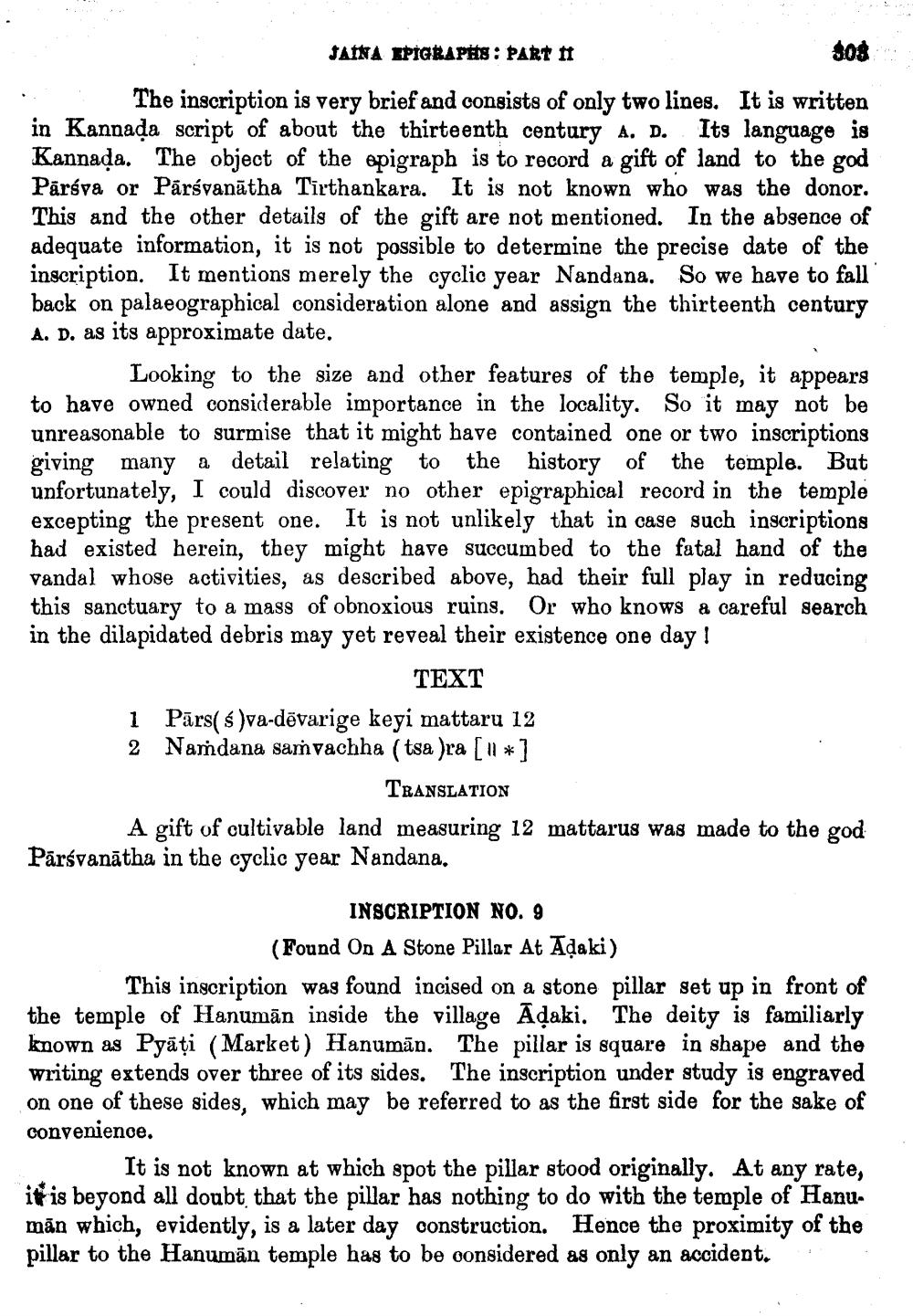________________
JAINA EPIGRAPHS: Pakt tt
808 The inscription is very brief and consists of only two lines. It is written in Kannada script of about the thirteenth century A. D. Its language is Kannada. The object of the epigraph is to record a gift of land to the god Pārsva or Pārsvanātha Tirthankara. It is not known who was the donor. This and the other details of the gift are not mentioned. In the absence of adequate information, it is not possible to determine the precise date of the inscription. It mentions merely the cyclic year Nandana. So we have to fall back on palaeographical consideration alone and assign the thirteenth century A. D. as its approximate date.
Looking to the size and other features of the temple, it appears to have owned considerable importance in the locality. So it may not be unreasonable to surmise that it might have contained one or two inscriptions giving many a detail relating to the history of the temple. But unfortunately, I could discover no other epigraphical record in the temple excepting the present one. It is not unlikely that in case such inscriptions had existed herein, they might have succumbed to the fatal hand of the vandal whose activities, as described above, had their full play in reducing this sanctuary to a mass of obnoxious ruins. Or who knows a careful search in the dilapidated debris may yet reveal their existence one day!
TEXT 1 Pārs( s )va-dēvarige keyi mattaru 12 2 Naṁdana saṁvachha ( tsa hra [ll *]
TRANSLATION A gift of cultivable land measuring 12 mattarus was made to the god Pārsvanātha in the cyclic year Nandana.
INSCRIPTION NO. 9
(Found On A Stone Pillar At Aďaki) This inscription was found incised on a stone pillar set up in front of the temple of Hanuman inside the village Ādaki. The deity is familiarly known as Pyāți (Market) Hanumān. The pillar is square in shape and the writing extends over three of its sides. The inscription under study is engraved on one of these sides, which may be referred to as the first side for the sake of convenience.
It is not known at which spot the pillar stood originally. At any rate, it is beyond all doubt that the pillar has nothing to do with the temple of Hanumān which, evidently, is a later day construction. Hence the proximity of the pillar to the Hanumān temple has to be considered as only an accident.




